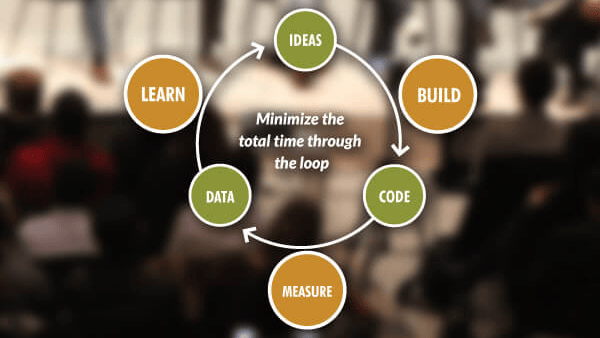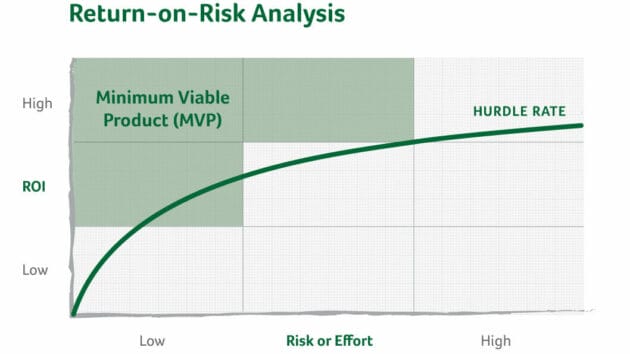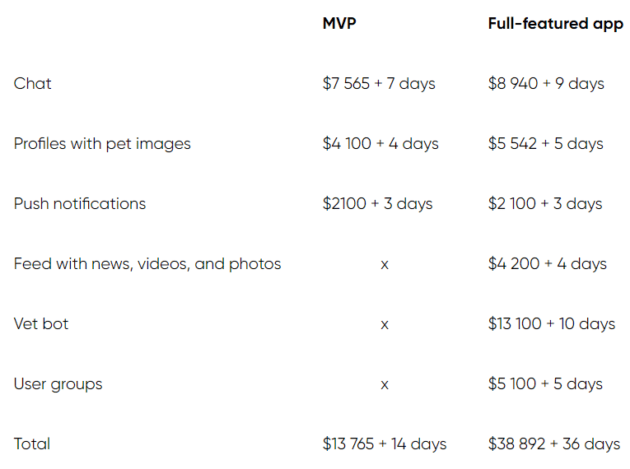MVP is a Minimum Viable Product, and the implementation of MVP solutions into your startup can save you a bunch of energy and nerves. Essentially, it will be your product in the most basic form. It will still solve the essential needs of your customers, which you plan to address but will cost you 3-4 times less than a full-weight product.
The concept of MVP was popularized by Eric Ries in his book “The Lean Startup”. It emphasizes the importance of testing business hypotheses through rapid experimentation and customer feedback. An MVP is a tool for implementing the lean startup methodology and testing ideas in the real world. It is a starting point for product development, providing a foundation for iterating and improving the product based on customer feedback.
The development of an MVP requires a different mindset than traditional product development. Rather than aiming for a perfect product, the focus is on creating a basic version that is functional and can be validated by customers. The MVP approach is based on the principle of building only what is needed and avoiding unnecessary features and complexity.
In this article, we will give you a guide on how to develop MVP solutions for startups, but before that, let’s dive into its essence and understand its advantages.
The essence of MVP solutions

Being a concept of a product, MVP is an approach that you can implement. One of the best definitions of MVP essence is that it is “the result of product development and customer development executed in parallel,” as described by Frank Robinson (co-founder and president of the company SyncDev).
There are several approaches to MVP solutions: “Wizard of OZ,” concierge, single-feature, and piecemeal.
“Wizard of Oz” approach
A “Wizard of Oz” approach is the easiest one, but it requires a lot of responsibility. You simply imitate the product or function you don’t have yet and, if accepted, provide it in several days or other clearly defined terms.
Example: Zappos started by selling shoes online without having actual shoes and buying them manually after obtaining the order.
Concierge approach
A concierge approach is based on direct communication with first customers and providing them with products and functions manually before they are automatized.
Example: OpenTable, which creator did the restaurant reservations manually before the startup became large enough.
Single-feature approach
A single-feature product is an MVP with limited functionality, where only essential functions are present. Other ones will be added after the testing.
Example: Spotify, which started as a streaming platform.
Piecemeal approach
A piecemeal approach is based on reducing costs to a maximum: for example, using cheap web hosting services and doing a job manually.
Example: Groupon, which started as a small WordPress blog.
Therefore, it is essential to have a customer-centered approach to firm development. It saves your as well as your customer’s time, money, and nerves. However, it requires a lot of responsibility from you and readiness to continue the development. So, let’s look closer at the advantages and implementation of MVP solutions.
Recommended for you: React Native vs Hybrid: Which One is Better for Fintech App?
Advantages of MVP development
First of all, it will save you time and money, as the minimum viable product will be much cheaper than your end product. As you can see on the graph below, MVP is located in the areas of low risk and high return on investment (ROI). It means that by using MVP solutions, your business performance will rise steadily.
In addition, it will give you valuable insights into how your company may develop in the future. Your minimum viable product is only a testing phase, but you will obtain your first key performance indicators (KPIs), enabling you to measure firm performance. The purpose of MVP is learning, as you can see in the diagram below.

Lastly, MVP solutions will show you the customer and market reception of the product, and you will understand whether it will justify your expectation. A feedback loop is an integral part of MVP solution, and your first customers will show you how well the product fulfills their needs and expectations.
Ask the right questions
Before MVP development, you must understand which features you should leave in your product, and which you can remove, saving costs. A common mistake is failing to use all mentioned advantages: if there are no feedback loop, market, and insight analysis, MVP development will probably be in vain. Therefore, it’s essential to ask the right questions before the process:
- Who will use it?
- Which problem will it solve?
- Which analogs are present?
- What core features should be there?
- What is the timeline?
- How much will it cost?
- How can customers contact us to share feedback?
- What are the long-term goals?
It is essential to ask these questions and take time to carefully consider your decisions to understand the target audience, main problem, and core features of your MVP.
After analyzing the advantages of developing MVPs and how not to fail, let’s go to the implementation process.
How to choose a platform? Costs, time, and action plan

What do you need to develop an MVP? What would you prefer, how much cost and time to allocate, and how to create an action plan? Let’s start with suggestions on how to choose the MVP development platform.
If you have an IT product, MVP development requires a tech stack. Examples of the best ones are React for web apps, React Native for mobile, and Electron.js for desktop. All of them use JavaScript, which is efficient and multifunctional.
Time and costs of MVP solutions development
What about time and cost? As MVP is an approach, not a product itself, the development cost will be unique in any case. However, they can easily be calculated. According to the guide example by Purrweb, as all apps’ features are lightweight and no additional ones are necessary, its development will be 2.5 times faster and 3 times cheaper than a full-size application.
Action plan for MVP solutions development
Now, let’s summarize the action plan for MVP development:
1. Goal definition
Remember those essential questions? Why is it necessary, and which problem will it solve? Ask them as many as possible, and answer all of them as fully as possible.
2. Market research
Explore your competitors, existing products, and target audience. At this stage, it is early for market strategy development, but you should clearly understand your competitors and what you may face while developing your product. You should also define the portrait of your typical customer or customers based on parameters such as age, gender, occupation, hobbies, and digital skills.
3. Making the scheme
You should outline all MVP features and how they will be developed in the future based on your goals and market research results.
4. Start developing
UI design and tech stake. Choose the right stake and develop a UI for your application.
5. Release MVP
After your minimum viable product is ready, release it and send it to your potential customers and ask them to try it.
6. Measure KPI & collect feedback
The main aim is to decide whether you should continue and what you can obtain from your product.
MVP development is a critical process for any company that wants to bring new products to market quickly and efficiently. By following a well-defined action plan for MVP development, you can create a product that meets customer needs and provides a foundation for future growth and success.
Afterward: What comes after the MVP release?

Your MVP is ready, and now it’s time to test it. There are four basic actions necessary after the MVP release.
Qualitative data: Collect feedback
Interview the customers to understand their impressions of your product and evaluate how it can be promoted and which is the chance of investment return.
Quantitative data: Measure KPIs
Your performance can be evaluated by your product cost, sales or purchase rates, and other indicators which you will choose. Be sure to choose 3-4 of them; more will be excessive at this stage.
Market strategy
It is the time to choose your market strategy and stick to it.
Continue/Terminate the development
Based on all indicators, customers, and market data, you should clearly decide whether the development will be worth it. If yes, you should continue as soon as possible before your customers wait for your product. If not, you should end it without remorse and be happy that your spending is much lower than it could be in case you would fail with the end product.
You may also like: 6 Steps to Take Before Starting a Startup.
Conclusion

MVP solutions can save you time and money, even if you will decide to end the development based on unsuccessful release results. The main purpose of them is learning, increasing your knowledge about how the particular market works.
MVP development will cost at least 3 times less than the full product and can proceed much quicker. To succeed, you need to choose the right tech stack, from which the JavaScript stakes are the best, establish clear goals by asking the right questions, and research the market and your audience. After the release, it is crucial to collect feedback and determine your KPIs. Based on them, you can successfully develop the product or terminate it before losses are too high. In both cases, you’ll obtain a lot of valuable experience for a low price.
Author: Aleksander Shulgin
This article is written by Aleksander Shulgin. Aleksander is the founder of Purrweb, an app development agency. Over the last 8 years, this agency has designed and developed more than 300 MVPs for clients from all over the world.







